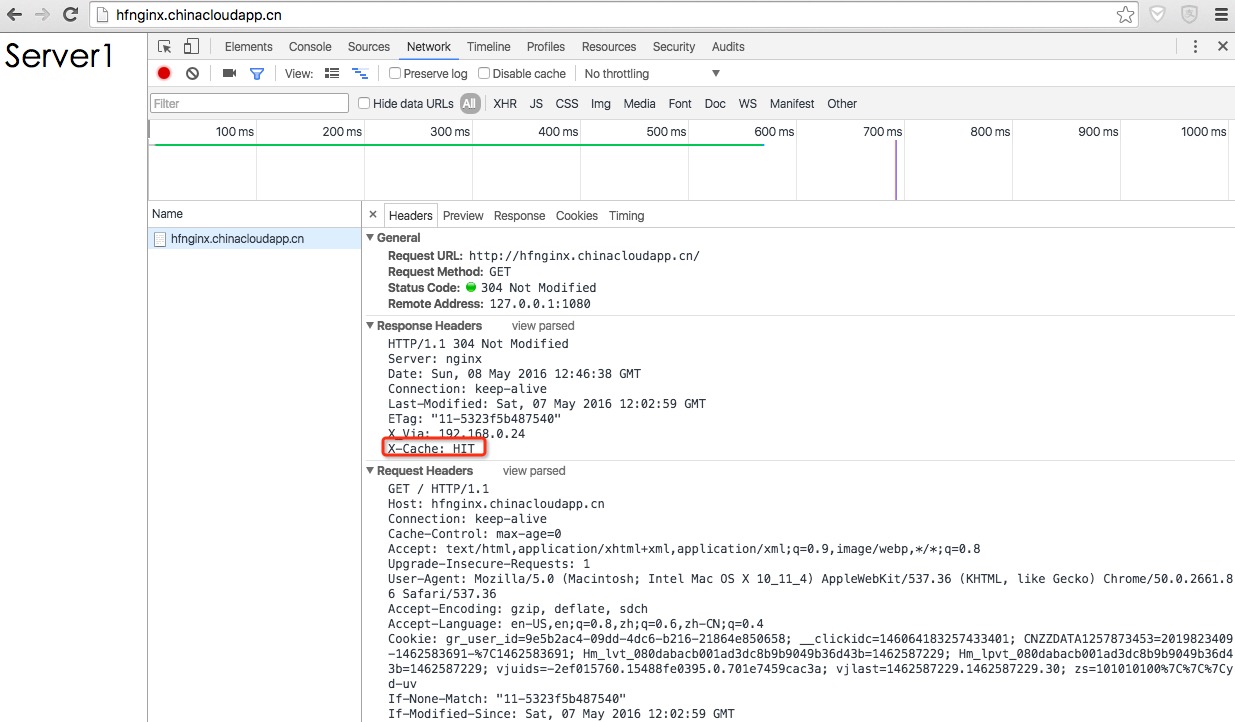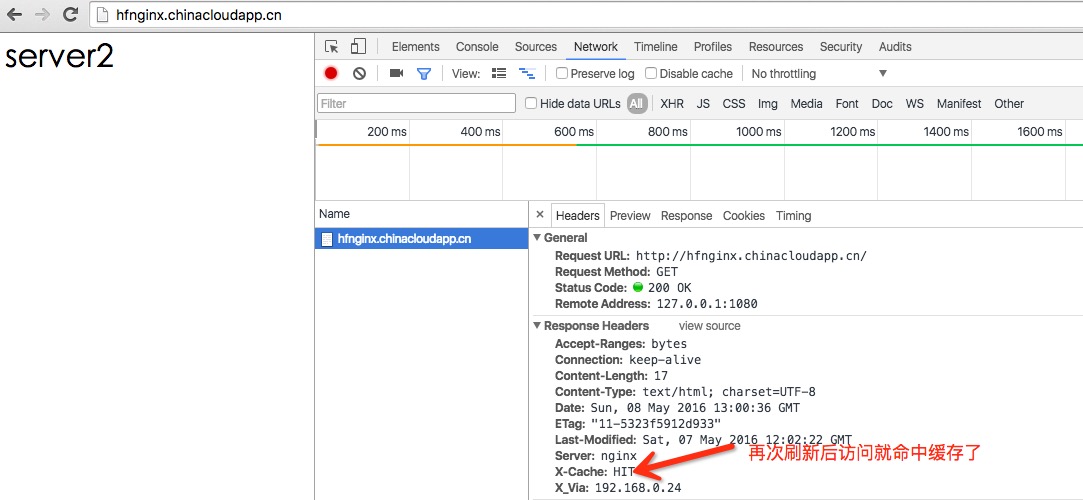一、负载均衡:
通过反向代理客户端的请求到一个服务器群组,通过某种算法,将客户端的请求按照自定义的有规律的一种调度调度给后端服务器。
Nginx的负载均衡使用upstream定义服务器组,后面跟着组名,组名后面是大括号包起来的服务器列表,每个服务器使用server开头,后面跟定义的服务器名字、服务器IP:Port、参数;
1:upstream要写在Server块的外面,可以有多个,名称不同即可,如下:
upstream webserver {
server 192.168.0.201;
server 192.168.0.202;
}
server {
server_name hfnginx.chinacloudapp.cn;
#access_log logs/host.access.log main;
location / { #首页负载之后端服务器
proxy_pass http://webserver; #通过upstrean定义的服务器组名调用后端服务器
proxy_set_header X-Real-IP $remote_addr; #传递客户端的ip地址
}
location ~* ^/form { #后端Web服务器要有此目录
proxy_pass http://webserver;
proxy_set_header X-Real-IP $remote_addr;
}
}
1.1:后端服务器要准备好首页和form目录
1.2:访问首页测试:


1.3:访问form目录测试:


1.4:nginx支持的三种负载方式:
round-robin:轮训调度,默认 ip_hash:会话绑定 least_conn:最少会话链接
1.5:backup服务器:
upstream webserver {
server 192.168.0.201 weight=1 max_fails=2 fail_timeout=2;
server 192.168.0.202 weight=1 max_fails=2 fail_timeout=2;
server 127.0.0.1:9008 backup; #调用backup服务器,可以是本机或其他服务器。
}
server {
listen 9008;
server_name localhost;
root html/error;
index index.html;
}
[root@hfnginx nginx]# cat html/error/index.html #backup服务器的内容
Error Page!
测试:将服务器组内的其他服务器关闭,访问如下:

1.6:实现动静分离:
upstream web {
server 192.168.0.1 weight=1 max_fails=2 fail_timeout=2;
server 192.168.0.2 weight=1 max_fails=2 fail_timeout=2;
}
upstream image {
server 192.168.0.3 weight=1 max_fails=2 fail_timeout=2;
server 192.168.0.4 weight=1 max_fails=2 fail_timeout=2;
}
upstream php {
server 192.168.0.5 weight=1 max_fails=2 fail_timeout=2;
server 192.168.0.6 weight=1 max_fails=2 fail_timeout=2;
}
location /{
root html/web;
index index.php index.html;
}
location ~* .php$ {
fastcgi_proxy http://php;
}
location ~* ".(.jpg|png|jpeg|gif)" {
proxy_pass http://image;
}
1.7:实现数据缓存:
缓存是缓存nginx服务器接收请求过的数据,数据超时时间不能太长,因为数据可能会发生变化,但是nginx服务器内部的缓存的数据还没有更细,会导致客户端请求的数据不是最新数据的问题,数据缓存目录不能定义在server快内,要定义在http块中。
[root@hfnginx nginx]# grep -v "#" conf/conf.d/hfnginx.conf | grep -v "^$"
upstream webserver {
server 192.168.0.201 weight=1 max_fails=2 fail_timeout=2;
server 192.168.0.202 weight=1 max_fails=2 fail_timeout=2;
}
server {
listen 9008;
server_name localhost;
root html/error;
index index.html;
}
proxy_cache_path /nginx/cache/first levels=1:2 keys_zone=first:20m max_size=1g; #缓存目录不能定义在server块内,要定义在http块中
#/nginx/cache/first定义缓存目录参数
#evels=1:2 定义两层目录,第一层一个字符名称,第二个两个字符名称
#keys_zone=first:20m 每个缓存都是一个共享内存空间。这就是用户定义共享内存空间地址的名称
#max_size=1g 定义目录最大空间为1g,因为缓存空间越大搜索数据越慢,因此不宜太大。
server {
server_name hfnginx.chinacloudapp.cn;
location / {
add_header X_Via $server_addr; #添加服务器地址到报文头部
add_header X-Cache $upstream_cache_status; #添加缓存状态到报文头部
proxy_pass http://webserver;
proxy_cache first; #调用缓存
proxy_cache_valid 200 10m; #定义缓存失效时间,200是状态码,即缓存状态码是200请求成功的数据,10m是10分钟,即缓存的数据的超时时间10分钟,10分钟后即过期,不定义则缓存不生效
}
location ~* ^/form {
proxy_cache cache_one;
proxy_pass http://webserver;
proxy_set_header X-Real-IP $remote_addr;
}
}
测试缓存:

注:X_Via返回的响应客户端请求报文的服务器,将有Nginx构建报文响应客户端请求,所以显示的是Nginx服务器的IP地址,X-Cache标记是否缓存,HIT是缓存过的数据,MISS是没有缓存的数据。
把缓存删除,重新访问,将返回没有缓存的数据:

刷新后再次访问:

1.8:另外常用的三种缓存:
open_log_cache:日志缓存,降低磁盘IO open_file_cache:打开文件句柄缓存,将文件缓存至 Nginx管理的内存当中加速响应 fastcgi_cache:缓存后端php服务器的内容,当时如果php内容发生更改则会导致客户端访问的页面不是最新的,因此要慎用。
另外Nginx的limit限制也是基于内存共享来实现的
